Life With a Ram Power Wagon: Daily Driving the Ultimate Ram 2500

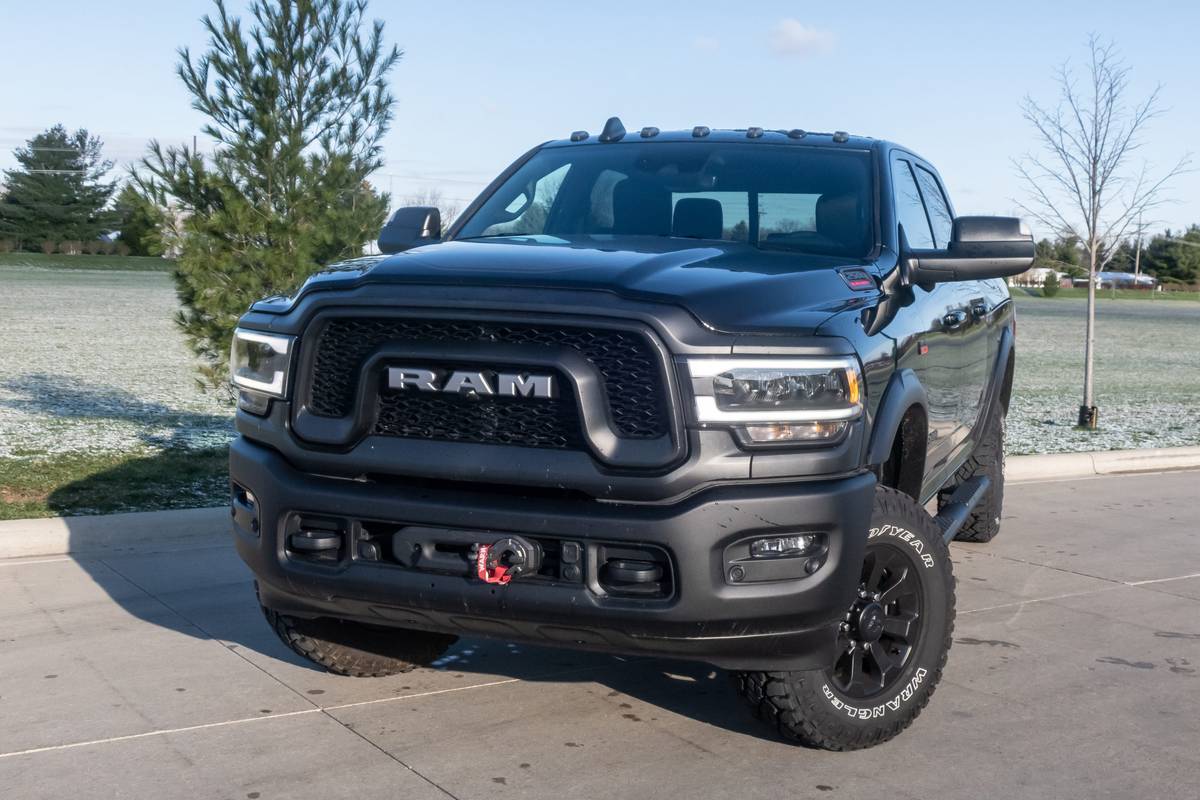
I’ve already driven the 2020 Ram 2500 Power Wagon extensively off-road, thrashing it through dunes and dirt at Indiana’s Badlands Off-Road Park in 2019, so if you want to know how it handles such terrain, have a look at this Power Wagon video. But I’d not had much experience using the Power Wagon as a daily driver, and despite the lack of fun nights out on the town and random trips to favorite coffee shops lately due to the COVID-19 pandemic, there was still plenty to do with my week in the ultimate Ram. And along the way, I got a better sense of what it’s like to live with this beast of a machine as a regular conveyance.
Related: Working and Playing With the 2019 Ram 2500 Power Wagon
Size Matters
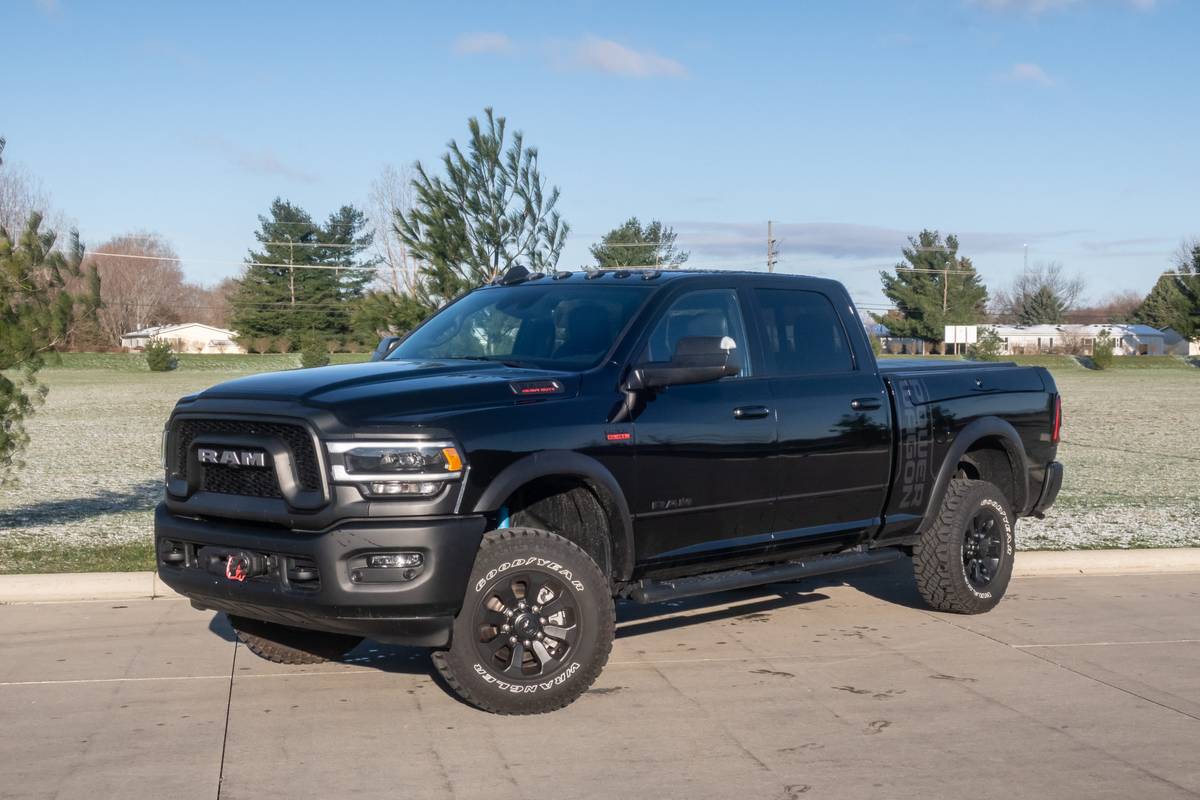
Your first challenge in driving a Ram 2500 Power Wagon is getting into the thing. Built off of the Ram 2500 heavy-duty truck, the Power Wagon is a huge truck, not a light-duty Ram 1500 pickup. The crew-cab configuration gives it four full doors and a massive cabin, but the factory lifted suspension will be your first challenge. There are running boards, but they’re fairly high and tight against the body so as not to impede off-road ground clearance over obstacles. Walk up, open the door and literally lift yourself up into the cabin via the step rail and grab handle on the A-pillar. The ground clearance of a Power Wagon is 14.2 inches, which is roughly 1-3 inches more than you’d get in other 4×4 Ram 2500 or 3500 models. Getting out of it can be equally tricky — you basically fall out and work to control your landing without twisting an ankle or wrenching a knee.

If getting into the Power Wagon is a test of your physical fitness, being in the Power Wagon is more an exercise in comfort. I’ve seen two-bedroom Tokyo apartments with less space than this cabin — the room inside is just vast. And it comes with the standard high-quality Ram interior that the brand is known for, especially in this latest redesign of its big trucks. You can fit five inside in comfort, or six in a pinch if you want to fold up the front seat center armrest, but the front middle seat is not really a comfortable position for anyone to be in for any length of time. Outward visibility is good, in the way that looking out the top of a 10-story building gives you a good view. Seeing things up close is a challenge, and one that’s addressed by the multiple cameras and 360-degree view that pops up on the monitor for ease of maneuvering. The unique Power Wagon embroidery on the seats matches the Power Wagon badging on the dash, so you never really forget what you’re driving (in case the experience of driving a 7,000-pound pickup didn’t do that already).
The Driving Experience
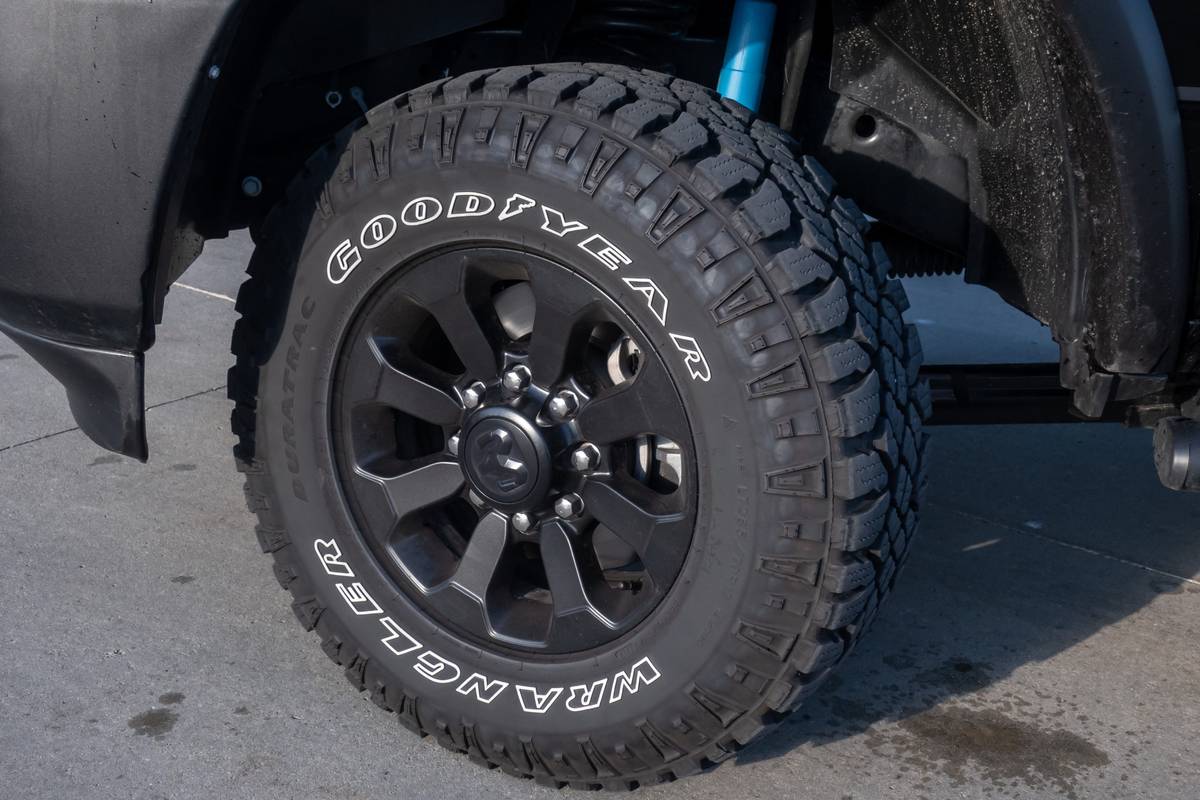
The experience of driving a Power Wagon is a curious one. Off-road, it’s a monster, able to scale steep rocks, blast through sand dunes, jump when it needs to or crawl when it must. On-road, it’s a very different animal and surprisingly more civilized than you might expect. Two elements contribute to its civility: first are the Goodyear DuraTrac off-road tires on 17-inch wheels, which are good for all kinds of terrain but feature a tread pattern that doesn’t cause them to be crazy loud on hard surfaces like concrete or asphalt. Highway driving is surprisingly serene, and the immensity of the Power Wagon combined with the exceptional cabin insulation and quieter tires gives you the illusion of traveling a lot more slowly than you actually are. It’s easy to fly along at super-legal highway speeds without even realizing how fast you’re going — that’s how unusually refined the Power Wagon is, an experience quite unlike a rival like the new .
Power Wagon MPG

I took the Power Wagon from my home in Ann Arbor, Mich., up to my family’s summer home near Port Huron, Mich., to check on the winter’s beach erosion and raid our stash of bathroom paper products (since our local stores are still out). With a round trip of about 200 miles of mostly highway driving on largely empty highways, the Power Wagon returned fuel economy of about 12.8 mpg, with highway mileage routinely seeing 15-16 mpg according to the onboard computer. I can’t tell you what the official EPA rating is for the truck, as its weight puts it in a category that means automakers don’t have to test it or report it. But the 6.4-liter gasoline V-8 engine under the Ram’s hood (making 410 horsepower and 429 pounds-feet of torque) did feature cylinder deactivation, and the eight-speed automatic transmission also helped maximize fuel economy by keeping the truck in high gears at highway speeds. Fuel economy is not the strong suit of any off-road pickup equipped like this one, but given the truck’s massive 31-gallon fuel tank, you could theoretically get around 400 miles of range between fill-ups.
Doing Truck Stuff
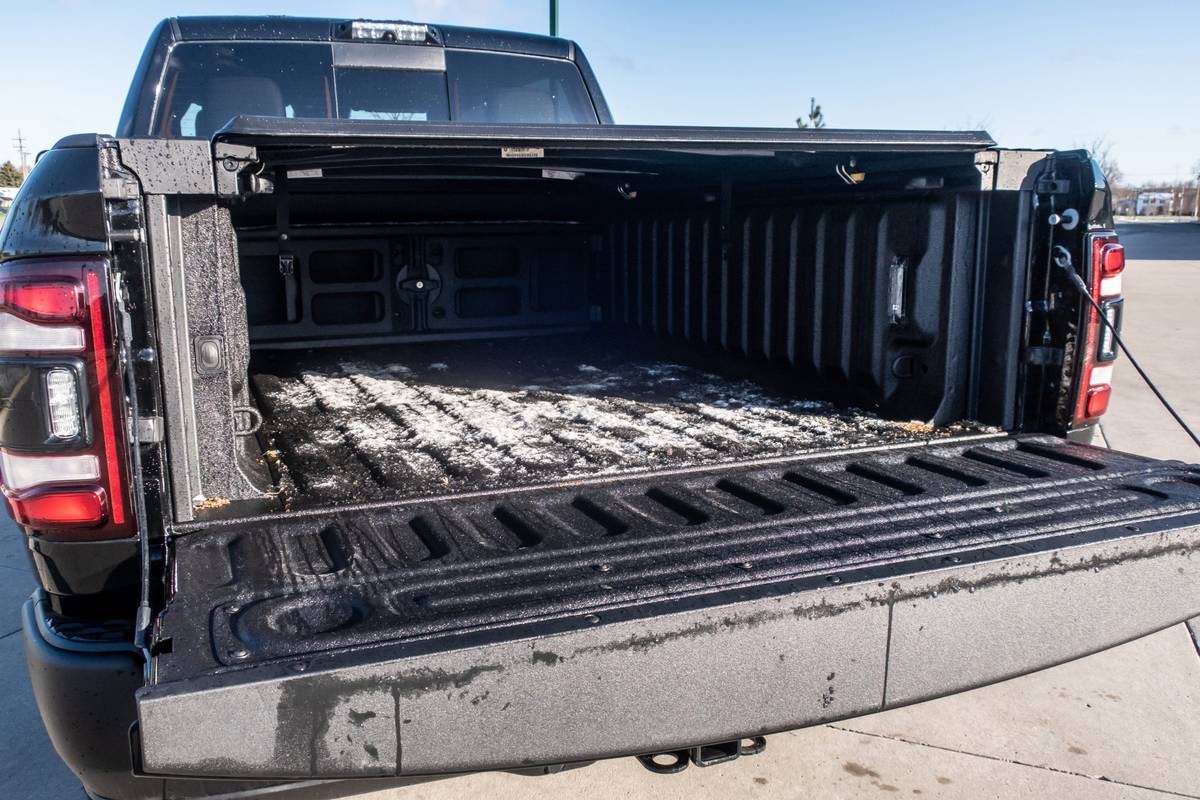
I couldn’t let the truck leave my possession without doing something trucklike with it, so I used the opportunity to purchase a 6-foot-long steel stock tank from a local hardware store that I intend to use for planting tomatoes on my back patio this season. The problem here is that the Power Wagon’s bed features the RamBox storage system, which eats into the overall bed capacity in favor of two lockable, lighted, drainable storage compartments built into the rear fenders. This is great for smaller items, or dirty things you don’t want in the cabin with you, but does restrict the useful size of the bed itself. Loading things into a bed this far off the ground can be tricky as well, but you’re aided in getting into the bed via the spring-loaded step that folds out from under the bumper, and that helps. The Ford tailgate step still seems like the best, safest way to get into and out of a pickup bed, but every little aid helps. Once the tank was wedged diagonally into the bed and everything was closed up snugly, I was on my way. It felt good to do truck stuff with a truck, and not simply use it as an oversized commuter vehicle.
It’s Not For Everyone
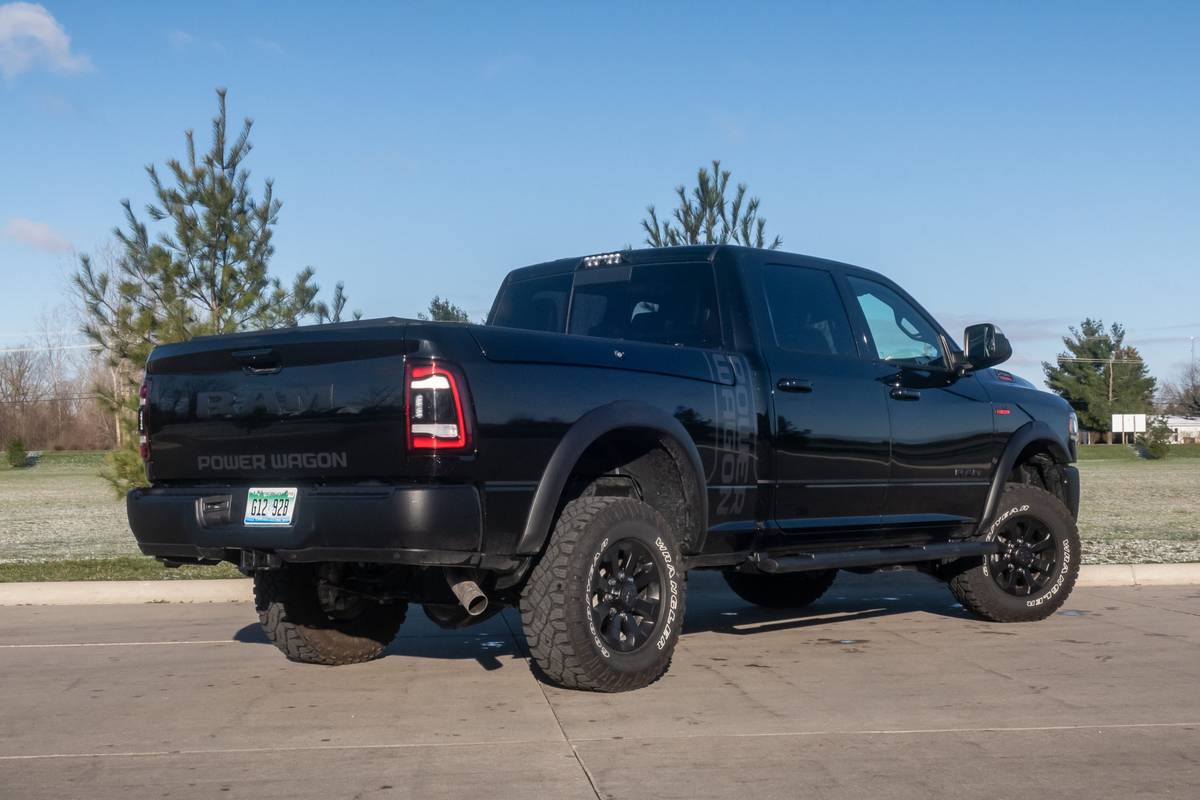
I’m fortunate to live where a truck like this actually can fit into parking lots (carefully) and navigate downtown streets (cautiously), but driving this thing on a daily basis is something best done if you have need of its capabilities. Live somewhere rural that involves lots of mountain logging roads? Perhaps you have desert property, or maybe a cattle ranch, and need something that can take you to every corner of your land and back again? Maybe you want to create an overlanding truck that comes equipped with its own winch from the factory, and intend to use the Power Wagon as a most excellent canvas on which to build an off-road survivalist masterpiece? All of those would be great uses for a Ram Power Wagon. Using it as an urban daily driver, commuting through the suburbs is possible, but it’s also overkill. You’d be far better served with a Ram 1500 (a Rebel perhaps, if you simply must get a super-capable off-road truck) or an even more compact Jeep Gladiator. With an as-tested price just shy of $70,000 including destination fee, this loaded Power Wagon doesn’t come cheap, but for those who need its abilities, it’s worth every penny.
Cars.com’s Editorial department is your source for automotive news and reviews. In line with Cars.com’s long-standing ethics policy, editors and reviewers don’t accept gifts or free trips from automakers. The Editorial department is independent of Cars.com’s advertising, sales and sponsored content departments.
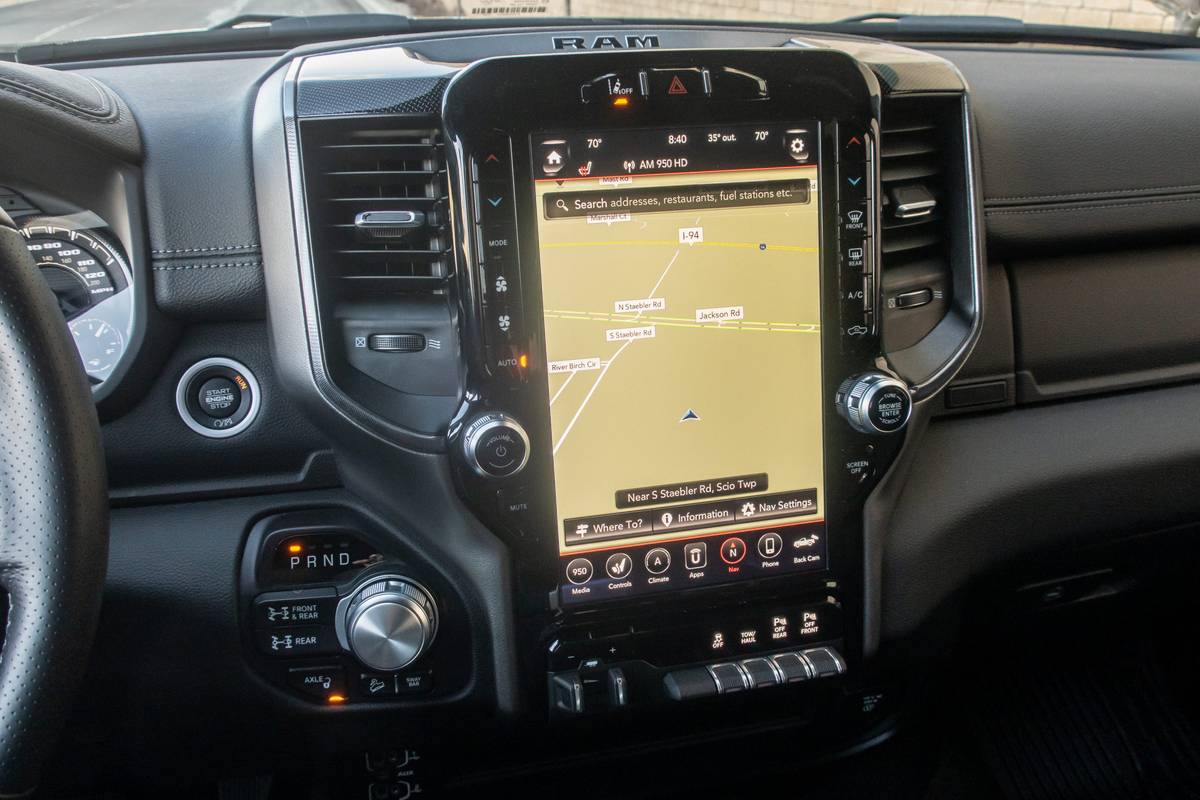
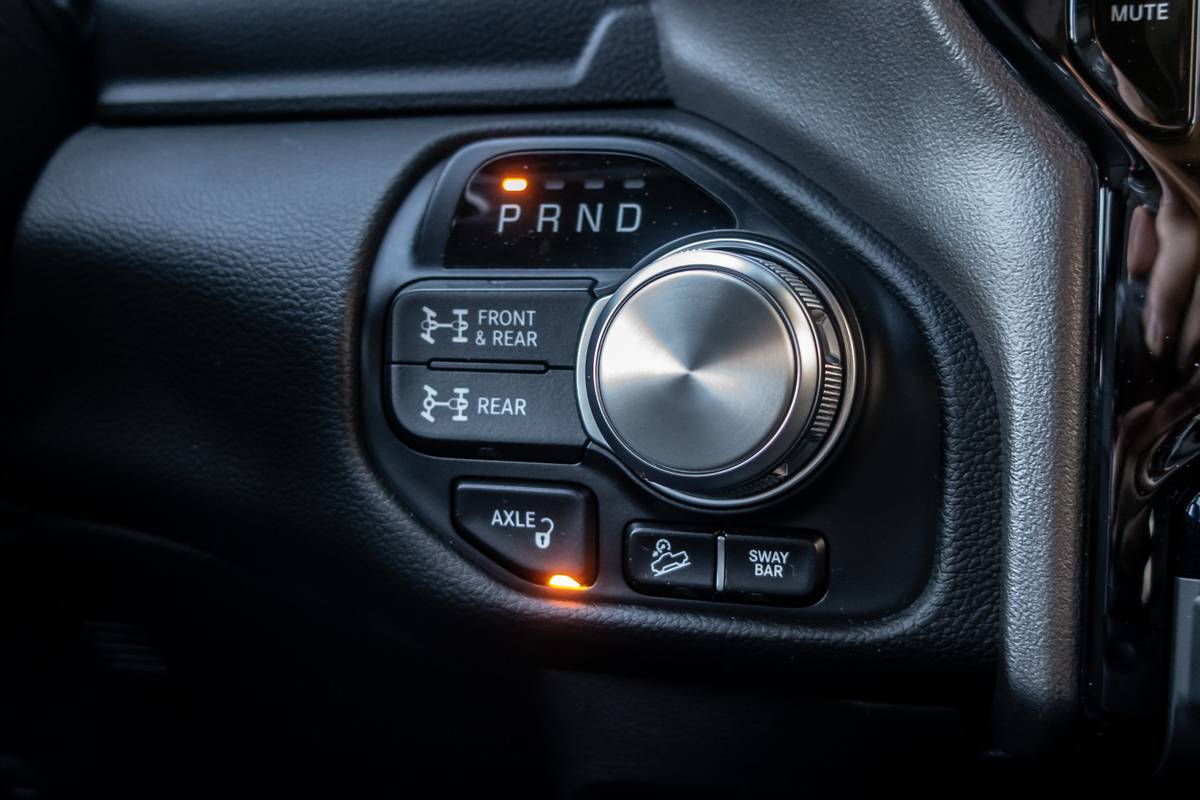
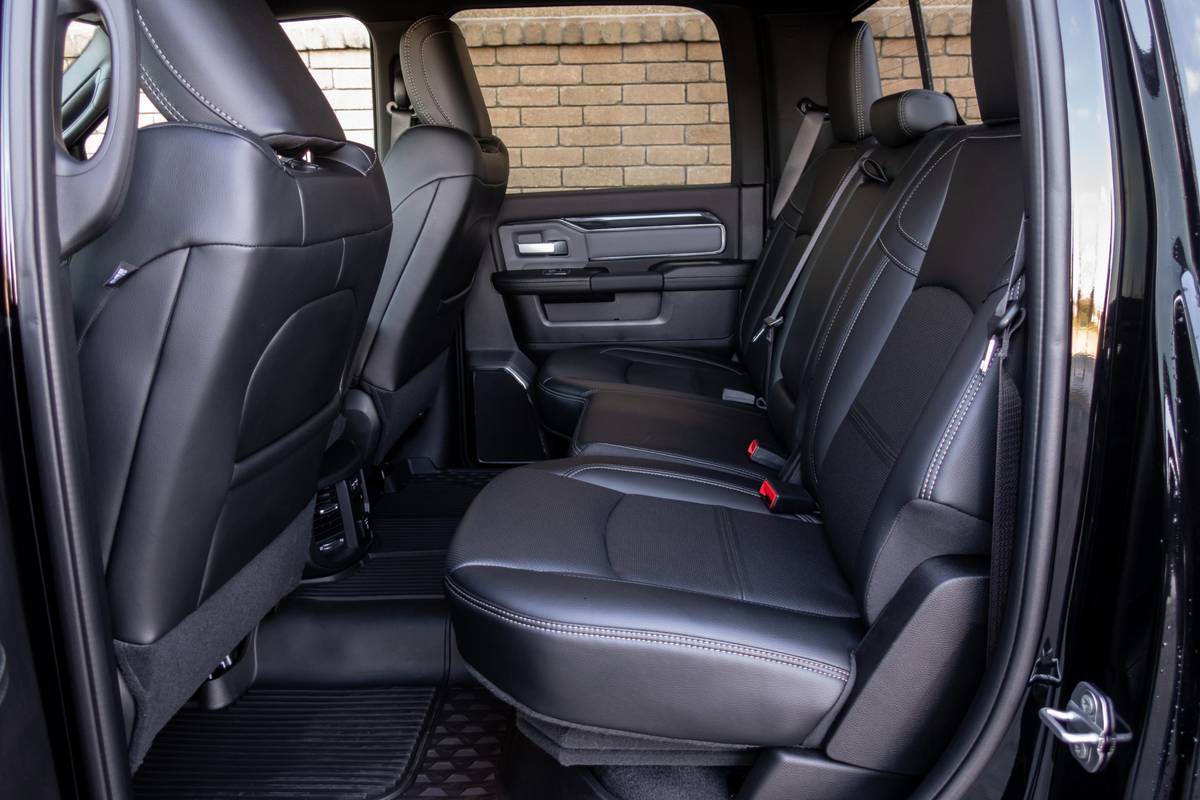


Detroit Bureau Chief Aaron Bragman has had over 25 years of experience in the auto industry as a journalist, analyst, purchasing agent and program manager. Bragman grew up around his father’s classic Triumph sports cars (which were all sold and gone when he turned 16, much to his frustration) and comes from a Detroit family where cars put food on tables as much as smiles on faces. Today, he’s a member of the Automotive Press Association and the Midwest Automotive Media Association. His pronouns are he/him, but his adjectives are fat/sassy.
Featured stories




